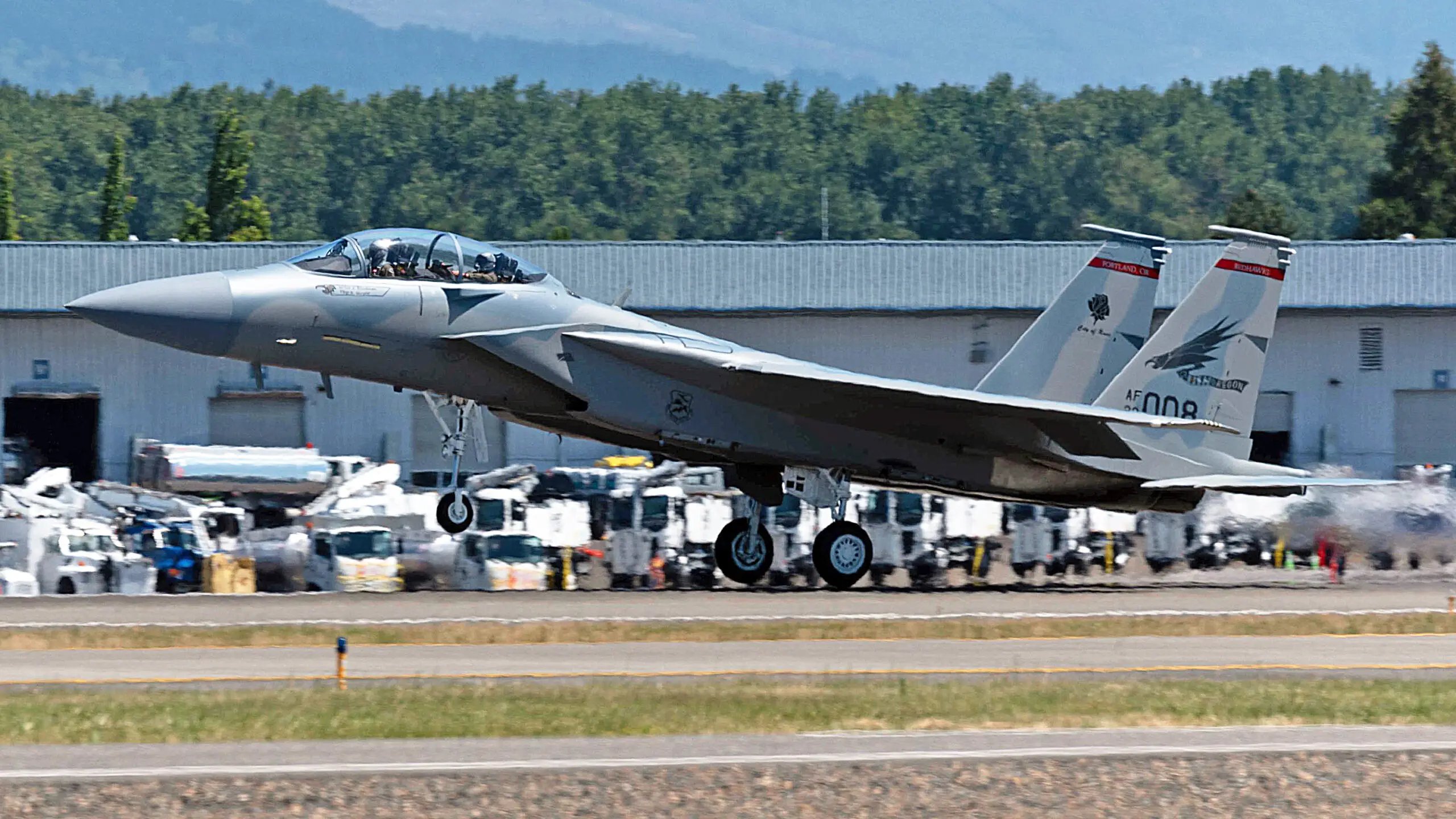Portland’s 142nd Wing/123rd Fighter Squadron, the “Redhawks,” received its first F-15EX Eagle II, bringing a whole new level of capabilities and operational potential to the renowned Air National Guard fighter unit. But receiving a new jet and integrating it into a wing’s operations, as well as blazing the trail for all other F-15EX units that will follow, is easier said than done.
To get a clear-eyed view of what this endeavor looks like on the ground and what may be possible with the type tomorrow, The War Zone talked in-depth with the 142nd Wing’s commanding officer, Colonel Michael B. Kosderka. What followed was a frank but encouraging view of the plans in place to quickly spin-up the fledgling F-15EX force and what could be in store for it — from taking on the air-to-ground mission to controlling drone swarms to adding a Weapons Systems Officer (WSO) in the back seat — in the not too distant future.
Here is that conversation:
TWZ: Can you give us a quick background on yourself and how long you’ve been in the ‘Eagle business’?
MK: I’m a native Oregonian. Born in Portland, grew up in Gresham, went to Barlow High School, Linfield College, Portland State, and Willamette. So kind of all around the area here and I got hired as a person right off the street as a ‘guard baby,’ as we call it, in 2000. I went to officer school in 2001 and then went to UPT [Undergraduate Pilot Training] in Mississippi… I better back up. I married my high school sweetheart. She and I dated in high school. Then I went to Mississippi for pilot training, and then Georgia for some advanced fighter fundamentals. And then Klamath Falls for the F-15 school. I started at Kingsley [Air Force Base] on F-15s in October of 2002, and then graduated and was back up here, flying Eagles, the A models, in April 2003.
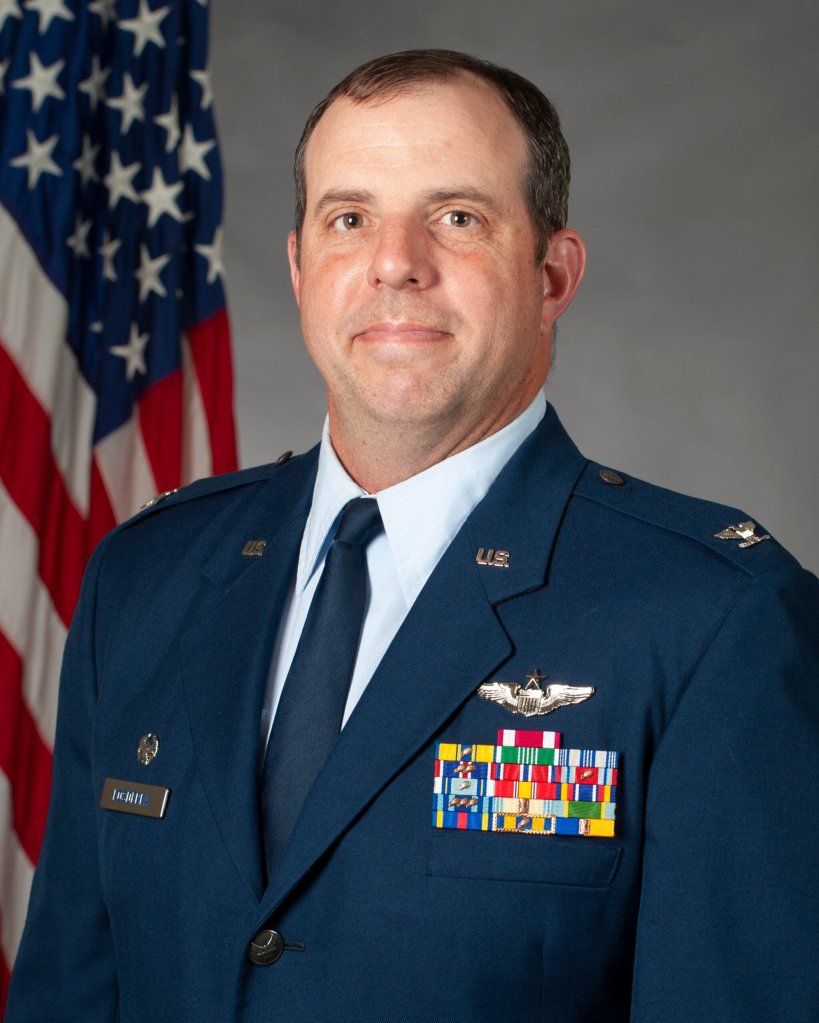
TWZ: How many flying hours do you have?
MK: I have about 1,500 total. I had to take about a decade off. That’d be another interesting story. For another time. I had some medical stuff that we were working through. But so I had 10 years of non-flying, which was a blessing and a curse kind of all at the same time.
TWZ: That’s kind of a unique track.
MK: It is tremendously unique. I was down for about a decade. And in that time, I went down to the National Guard Bureau staff, I went to the state staff, I was actually in the Medical Group for a while, then I was a comptroller, and then I went to the maintenance group, and then I got back into flying again a few years ago. And there you go, here we are.
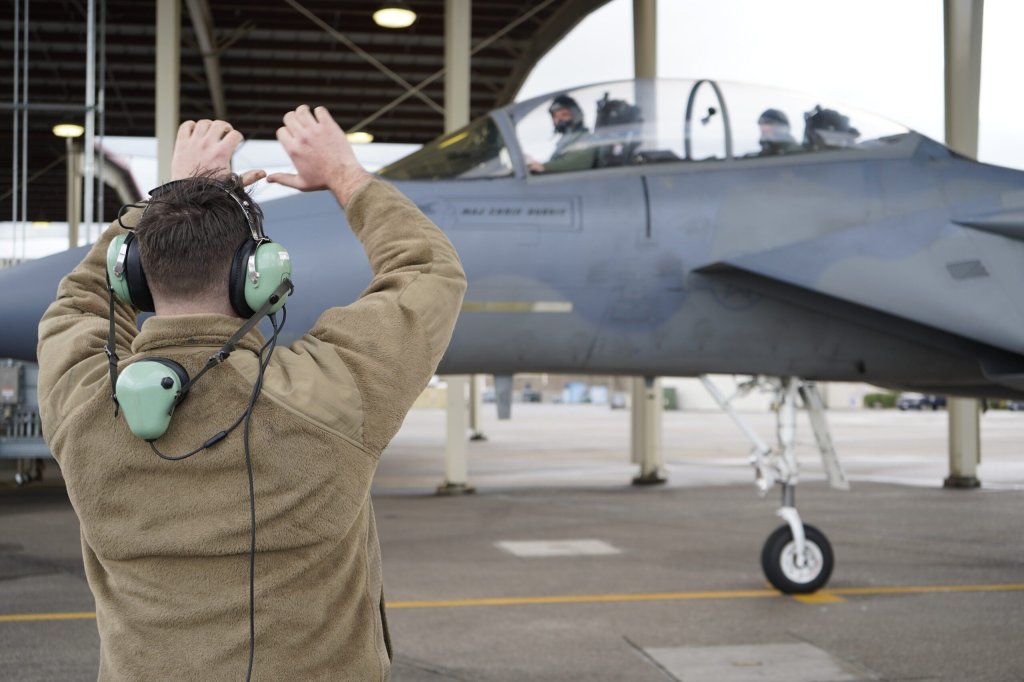
TWZ: OK, let’s get into the F-15EX. Until the F-15X — now the EX — story came to light, did you ever think you would see the United States Air Force, let alone the 142nd Fighter Wing, accept a brand new Eagle into its inventory?
MK: It’s a funny story. So back then, one of my all-time mentors, Colonel Jeremy Baenen — who retired as the 173rd Fighter Wing Commander years ago — had a vision in 2005/2006 of having the F-15G [G for Guard] and recapitalizing all of the Eagle units in the Guard, all of the Viper units in the guard, the A-10 units. And he basically got laughed at and told ‘that’ll never happen. We’re never gonna have what we call a Gen. 4.5.’ It’s not 5th Gen. It’s not stealthy, but it’s certainly better than the 4th Gen. airplanes that we have today. He basically got laughed at. And the F-15X is pretty much the F-15G, at least what he was sort of talking about 15 years ago.
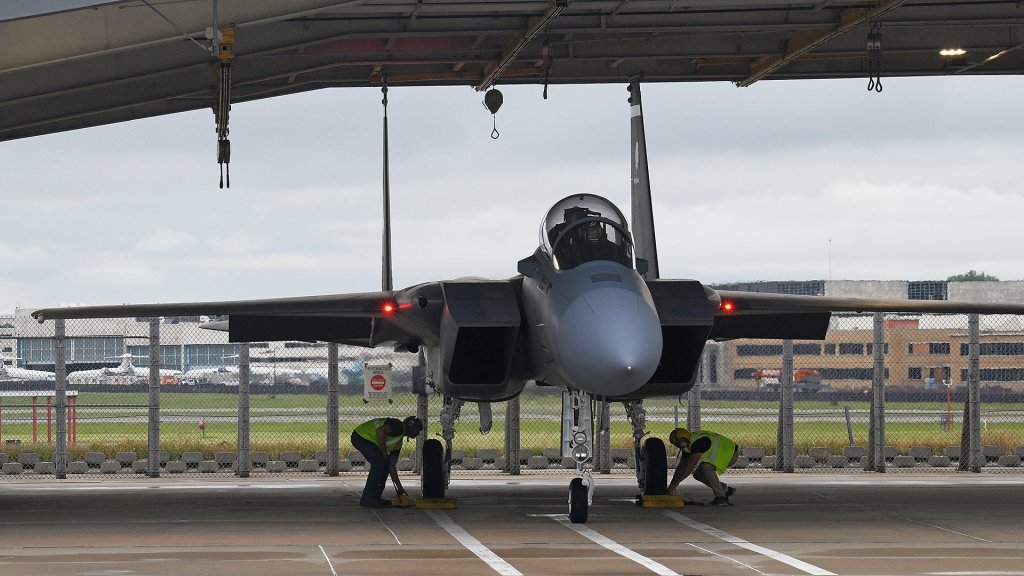
So I’ll be brutally honest with you. As we went through the acquisition process — and it was a rapid acquisition — there’s been a fair number of roadblocks and speed bumps, I guess I should say speed bumps, not so much roadblocks, along the path. I wasn’t entirely sure that the jet would ever show up. But sure enough, last Wednesday, it landed here. It’s full steam ahead. It’s gonna be really good. It’s gonna be a really great transition. It’s exciting.
TWZ: The F-15EX ended up being extremely relevant and very important. So it should be very interesting to watch.
MK: Portland, New Orleans, and Fresno are the three Guard units that are getting it, and then Kadena [Japan] as well. So those units and then hopefully it grows. There’s talk about it maybe eventually replacing the E model, and we’ll see, but it adds relevancy. The reality is the C model — in my super-biased opinion — is the greatest airplane ever built, but it’s not really all that relevant in today’s high-end fight. And so the capabilities that the X is going to bring, they make us relevant again.
TWZ: How did the 142nd end up being the launch unit for the EX? And what is it about the mission that you guys havethat helped make the 142nd FW the first place to send those jets?
MK: I certainly wasn’t in the room for all of those political negotiations, but I think it makes sense. The C model needs to be replaced. That, I think, was the starting point of it. Most of the C models are in the Guard, and then Kadena as well. Well, there’s the Guard, Kadena, and Lakenheath. So Lakenheath has already gotten rid of their C models, but they also have their Strike Eagles [F-15E], so they’re kind of still flying on. There was a lot of back and forth of who’s going to get the first Xs. Was it going to be Kadena? Or is it going to be a Guard unit?

I honestly don’t know how, or why, the decision was made between New Orleans, Fresno, and Portland. I think that our reputation has a big part of it. I would imagine that our location is a big part of it too. Not only are we accepting our new jets, like literally last week, we’ve got another one coming in a couple of weeks or so. And then we’re going to get another 12 jets over the next, let’s call it, 10 to 12 months or so. So about a year from now, we should have 14 airplanes that have Redhawk tails on them here in Portland. But then we’re also going to be instrumental in the acquisition and movement of jets 15 through 51 [36 jets] to Kadena.
So the plan is that starting here in about December, there’s going to be active duty personnel from Kadena Air Base that will be here. I don’t think they’re on a TDY [Temporary Duty Travel] status, but maybe they’re PCSing [Permanent Change of Station] but I think it’s TDY. But anyway, they’re going to be here. And they’re going to be learning how to maintain the airplane, how to fly it, and all the things that they need to do. And then, as Boeing is able to deliver jets starting in about July of 2025, those jets will be Kadena jets. So they’ll come here, they’ll stage here with all their support equipment with their personnel. And then when they get enough of them here at a time — I would imagine about six jets at a time or so — then they’ll do a movement to move them over to the island [Okinawa, home of Kadena].

We’re actually in a perfect spot. The Guard is super experienced, we’ve got the most experienced maintainers, pilots, defenders, and everything else that we have on this base as anywhere in the world. That’s just how the Guard is. And so we’re going to be able to be on the front edge of making sure that the active duty folks are going to be able to be trained and ready to accept the airplanes as they then flow over to Kadena.
They’re gonna show up here in December, be here for about two years or so total. And then Kadena is going to be full-up. So the plan, which changes every day, but the plan right now, is we get 14 of our planes, then Kadena gets the next 36. And then we get our last four, and then it goes on to, I think New Orleans is next, and Fresno is last.
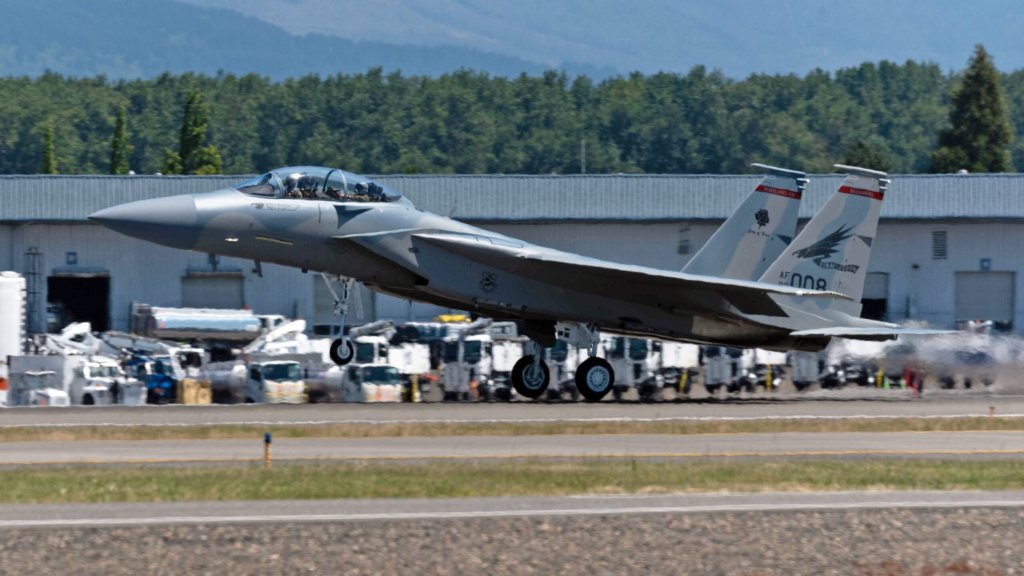
TWZ: And during this, when you are helping those guys stand-up, are you going to still retain some F-15C/Ds?
MK: No, we’re not. So the current plan is that we are completely out of the C model. But we don’t have any D models right now. We took our last D model to the Boneyard [at Davis-Monthan Air Force Base] about a year or so ago. So we only have C models. And the plan right now is that we are totally out of the C model business by the end of Fiscal Year 2025. I think it’ll be a little bit quicker than that. What I expect is that as the Xs arrive, we’ll kind of have an incremental increase of Xs and we’ll kind of have an incremental decrease of Cs at the same rate. Enough to keep us so that we can keep our pilots current, keep our maintainers with something to work on, but also keep our alert mission healthy as well.
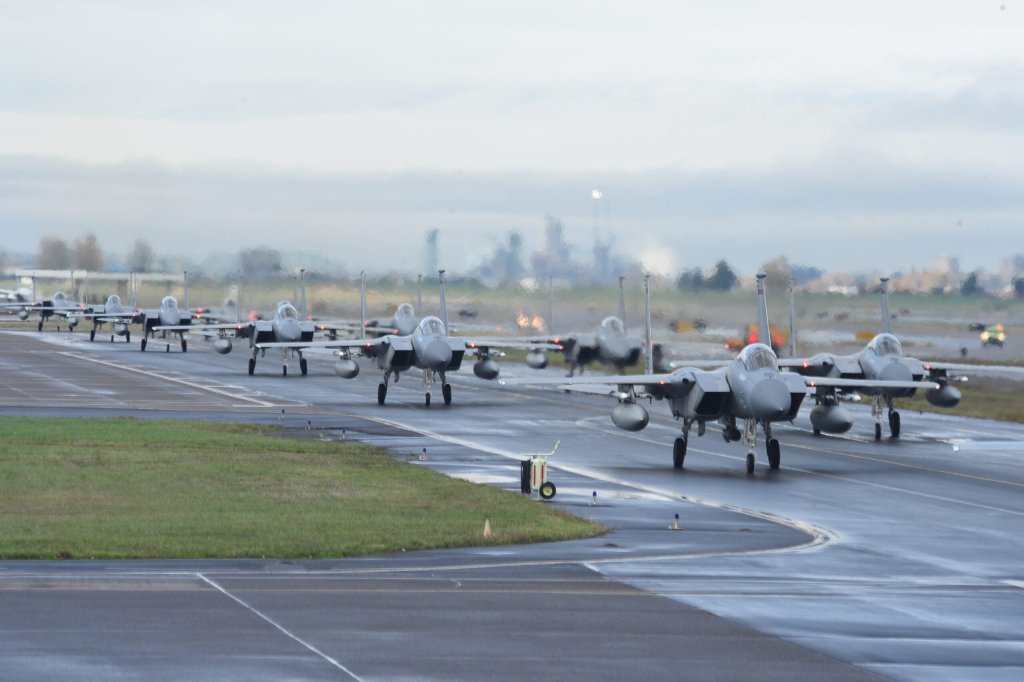
TWZ: What will the F-15EX bring to the wing over the C/Ds? How tough are the C/Ds to maintain these days? I think the youngest one is probably nearly 40 years old. What’s the delta on maintainability?
MK: What does it bring to the wing? Our newest C model is 1984. So no kidding, it’s 40 years old. I like to say it’s 1970s technology, but that’s not entirely true, because a lot of the avionics have been upgraded, certainly the radar is newer than that and stuff. But I mean, it’s old. The flight control system — think like a Cessna — like you pull back on the stick, and that’s not quite literally, but basically, levers and pulleys are moving the flight controls, whereas the X is fly-by-wire.
The X is a full digital backbone type of airplane. In theory, if there was a new threat or a new capability that we needed, the test guys can go in there, figure it out, crack open the architecture, and sort of squirt the airplane with the new stuff that we need.
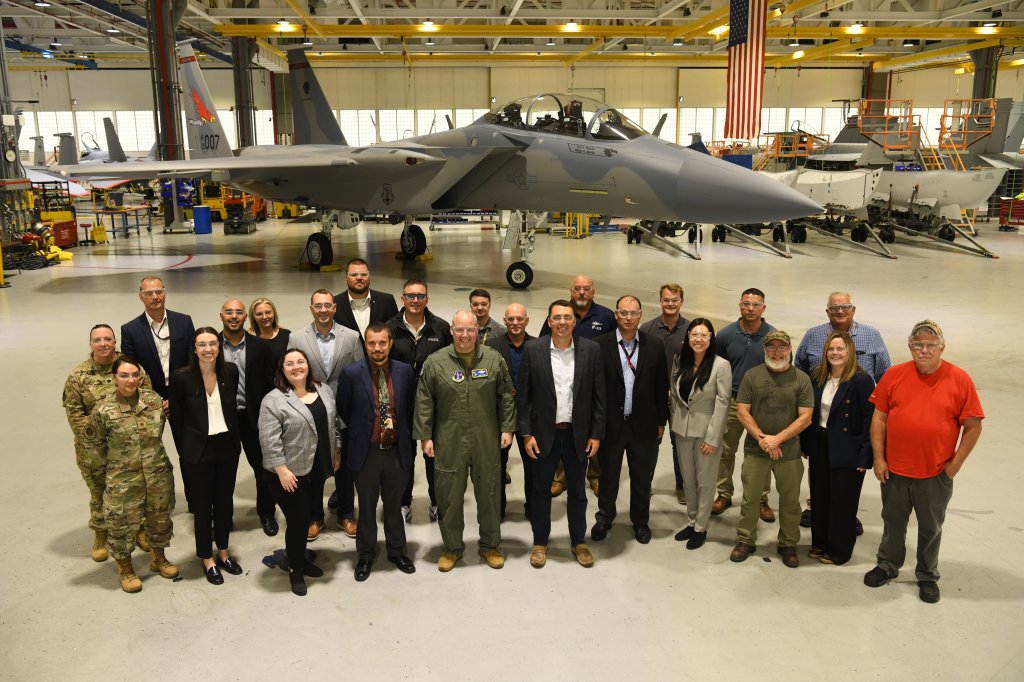
We currently don’t really have any self-protection capability. The X has a very advanced self-protection capability. We’re going to have the ability to get into anti-access/area denial locations in the high-end war and actually survive. Today, that would be a major challenge for us to be able to get into the high-end fight and survive. With the X we have a pretty good capability. I’ll be perfectly honest with you, I haven’t flown it yet. So we’ll need to test that stuff out. But I’m told it’s reallygood.
TWZ: The Eagle Passive Active Warning Survivability System [EPAWSS] electronic warfare and surveillance suite is one of the most advanced electronic warfare (EW) and integrated EW suites on a fighter from what we’ve heard from the testers who’ve been working on it and industry.
MK: We’ve been told forever that we’re getting EPAWSS, but it’s too expensive. And now we’ve got it in the new jet. Like I said, I’m told that it’s really fantastic. And I can’t wait to see it in use and see how it actually performs. But I’m told that the engineers say it’s really awesome. Then additionally, right now, the C-model was an air-to-air only fighter. The X is currently a direct C-model replacement. So the plan today is that we would utilize the X in an air-to-air-only configuration, but it has tremendous growth capability.

We currently don’t have conformal fuel tanks for it, but there is a plan to get us conformal fuel tanks. And then when we do, we can start talking about putting all kinds of air-to-ground capabilities into the airplane, potentially putting WSOs [Weapons System Officers] or other experts in the backseat as well to have us do any number of multi-role capabilities that it’s just physically not possible to in the C model.
So the X has tremendous growth capability. It’s really exciting. Basically, what it’s going to do is turn a wing with a primary mission that is on life support, frankly, into something that has America’s newest fighter, and we’re going to be relevant with that airplane for decades to come.
It’s really great for the wing. It’s great for the state. It’s great for America, it’s really, really exciting.
TWZ: How is just maintaining the F-15Cs today that you’re flying? I imagine just getting parts is pretty challenging at this point.
MK: You’re exactly right. We have the greatest maintainers in the world. I have never once hopped into an F-15 maintained by the Redhawks and felt nervous about flying it. Ever. That said, the reality is, it’s hard to maintain these things. Obsolescence of parts is a huge factor, sharing those obsolete parts between the other C-model units is a challenge.
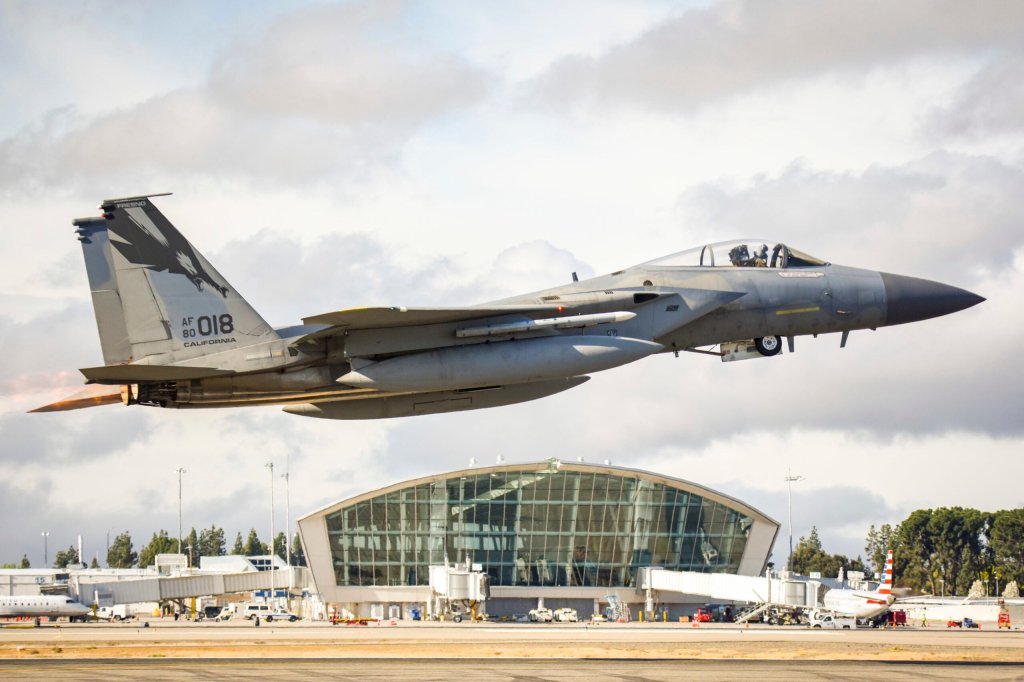
Then the biggest thing that our maintainers will tell you is because we’re dealing with airplanes that are 40 years old and older, they are breaking in new and interesting ways. They’re seeing issues that they’re like, boy, we have literally never seen this before. They’re constantly having to either use their own personal expertise and years of experience and also constantly be in communication with the SPO [Systems Program Office] and literally, the engineers that built the jet and try to figure out how to fix that.
TWZ: It’s time, right?
MK: I graduated from weapons school way back in 2007. And that was the year that we broke the St. Louis jet in half.And then we started realizing about longerons [the load-bearing portion of the aircraft], and it’s like, what the heck is a longeron? All of our longerons had been replaced. But the rest of the jet is just old. In my opinion, it’s the greatest airplane ever built. But it’s time. She needs to retire. She did her job.
TWZ: What new infrastructure was added to the Portland Air National Guard as well as additional training to accept these jets into your inventory?
MK: We haven’t actually had much infrastructure yet. But that’s because of the rapid acquisition process that was done. Congress and the Air Force realized that, ‘holy cow, these C models are not going to survive.’ So they needed to get something cooking quick. And that’s what they did with the X program. And therefore, we’re late frankly on some infrastructure upgrades, but they’re in the queue. There are plans to get them all done.
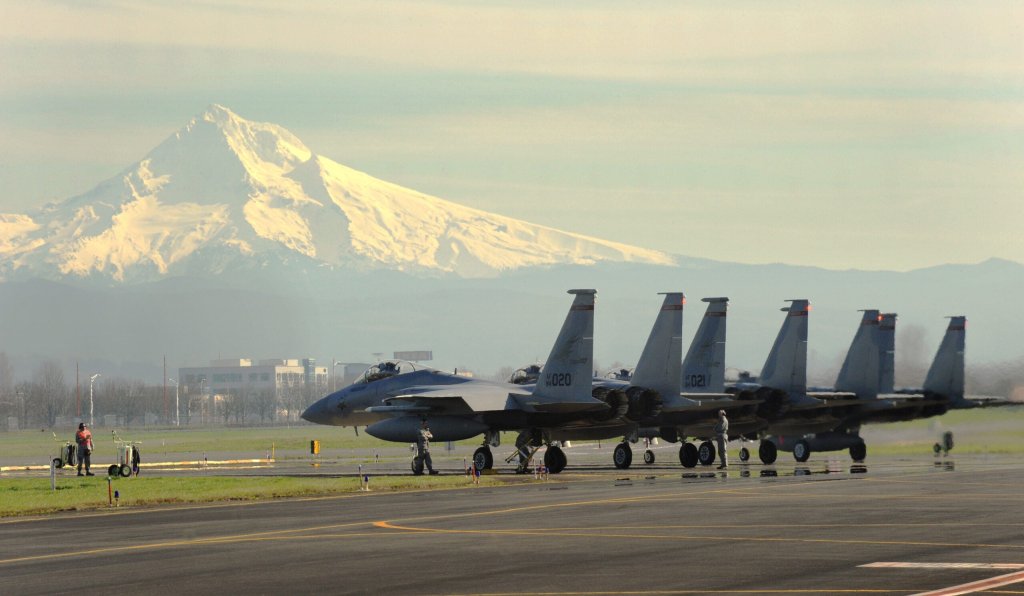
For example, our engine shop is going from a Pratt & Whitney engine to a GE engine. They are going to need some different tooling and some different sort of training to be able to fully maintain that engine. Our main hangar was built in the 1950s. It really doesn’t need anything new for the airplane itself, but it needs some seismic upgrading to be safe for decades to come.
We’re talking about doing a combined ops maintenance building that will be super awesome in the middle of our flight line. But that is a few years out because we have to get designed and funded. We need to have a new building to store all of the pods that the airplane can carry, or an area where we can store the conformal fuel tanks once we get them.
This next one is a big challenge for the Guard, because, as you know, Guard bases are pretty small. We’re a community base. We’re right in the city for the most part. Whereas active duty bases like — think Nellis. It’s out in the middle of nowhere. Our munitions storage facility is safe where it’s at. And it works fine, assuming we’re only storing AMRAAMs [AIM-120 Advanced Medium-Range Air-to-Air Missiles]. But once we try to start storing or building bombs, whether it’s for live ordinance, which I don’t think we’ll probably ever have here, or even just concrete for practice, we have to have a massive footprint and expansion and infrastructure improvement for the munition storage area. That’ll be a big challenge for most of the Guard. We don’t have a lot of growth opportunity for that particular section of the mission. Those are things we have to work through. We’ll overcome and we’ll make a plan, but it’s not a simple plan.

TWZ: It sounds like it’s pretty seamless, generally, going from F-15C/D to F-15EX.
MK: That’s true infrastructure-wise. Originally, if you remember, the very first announcement was that the first set of X’s were going to go to Klamath Falls to Kingsley. Because of that, Boeing was following the contract. And so Kingsley is a non-deployable FTU [Formal Training Unit]. Therefore, they really only needed to create enough maintenance support equipment for a home station mission. And so we’re struggling with that right now, because as we’re just now starting to get our jets, we don’t quite have all the support equipment, but we definitely don’t have two sets of them. We’re going to need to have a home station alert mission continue while simultaneously deploying. As far as infrastructure goes, that would be the biggest thing that we just need to overcome.
The rest of our buildings are functional enough that we can sort of get there from here. But the support equipment we want is a little bit of a longer timeline. We’ll get there and there’s a plan, but it’s gonna take a little bit.
TWZ: The change with Kingsley going to F-35s happened a little bit later in the game. Then Seymour Johnson [Air Force Base in North Carolina] is now going to do the basic training for this aircraft. How did that affect the whole plan here in Oregon? I think there was some scalability of having — like there is today — F-15s at both bases in Oregon as part of the Oregon National Guard. Now it’s a two-fighter type Guard state. Is there any impact on the 142nd from this?
MK: I don’t think as much with our day-to-day operations once they eventually get their F 35s and we have the Xs, I think that there’ll be a lot of really good synergies where we have two different missions, we can learn from each other. So that’ll be an advantage. The disadvantage, of course, is just what you said.
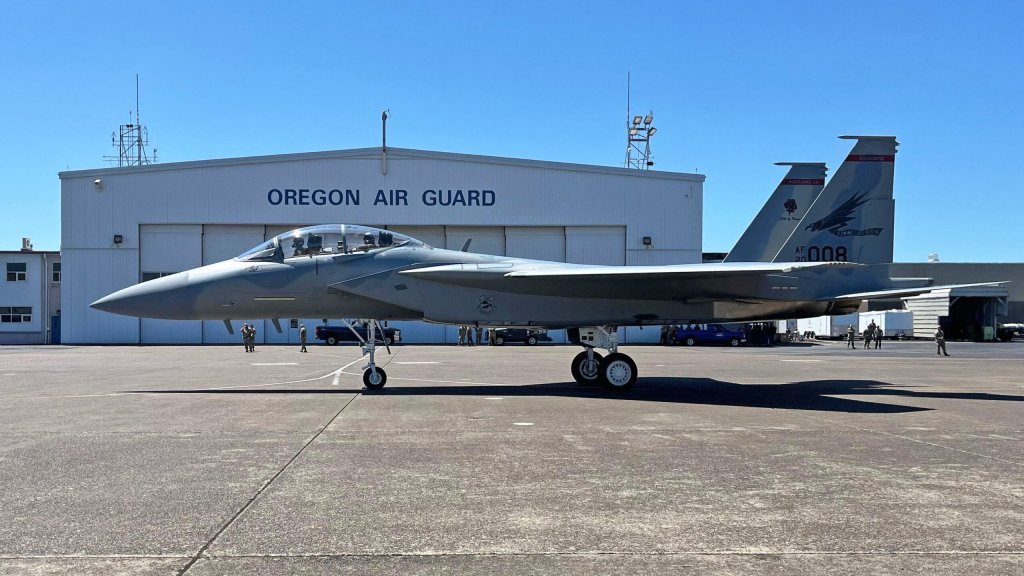
Let me give you an example. If we were deploying, I have sort of a handshake agreement with the Kingsley wing commander of ‘hey, if we’re deploying and we need some help, can you send some Eagle maintainers or whatever up here to help us out?’ Similarly, we do the same thing for them. Also, anytime we go TDY or go on trips, we often share pilots and maintainers just because why not? So we won’t be able to do that in the future. But at the same time, we’re going to be able to fly some dissimilar missions against each other and learn from each other. So I think there’s some goodness from that for sure.
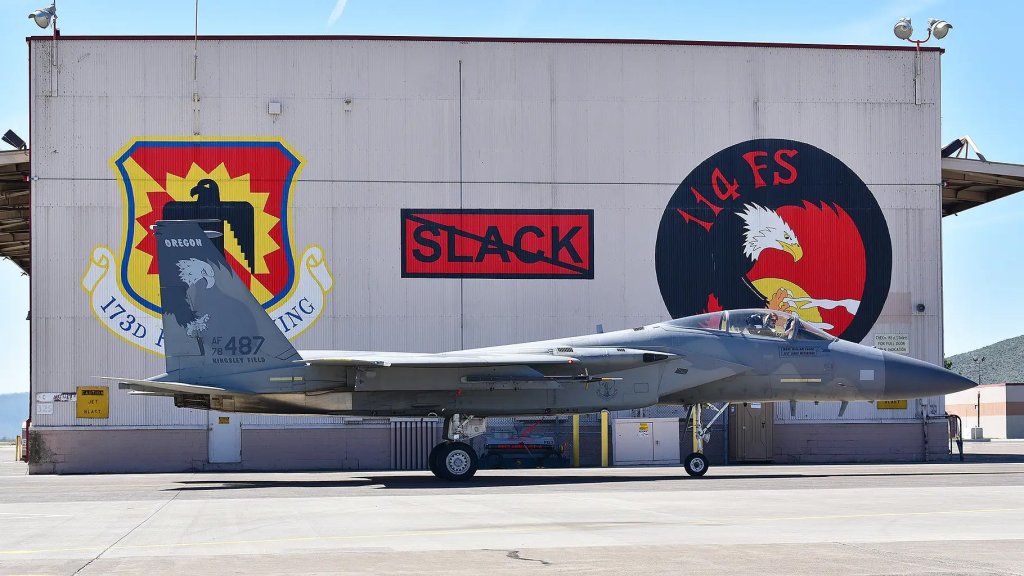
As far as the FTU portion where Kingsley’s ultimately going to get out of the F-15C model and be doing an FTU [for] F-35s, that’s gonna have a little bit of a wrinkle effect, or impact on us, for a two-year time period. Because Kingsley, you know, their end-day kind of moves a little bit from day-to-day, as far as when they’re going to be done flying C models, and I don’t think Seymour [Johnson] is ready to stand up an X B [Basic] course just yet. So that is a question for our national level leaders to sort of figure out how we’re going to bridge that gap. And there just really isn’t a good answer on that one just yet.
TWZ: A lot of logistics.
MK: You think about Seymour [Johnson], I mean, they’re good Americans, they’re good patriots, they’re working hard out there, too. But they’re sitting there going, ‘wait a minute, I have to now somehow increase [our] capacity to take on the Guard training and Kadena training as well?’ And they’re not equipped to do that just yet.
TWZ: How do you see the air-to-ground mission working and the WSO [weapon system officer] side of it? Where does that sit right now? The jet is obviously very well set up for it. Even two pilots for certain missions, long missions, very complex missions, might be beneficial. How will you make the best of that back seat and the possibility of bringing in the air-to-ground mission to the 142nd?
MK: The first step in having an air-to-ground capability is we have to get the conformal fuel tanks. And right now they’re not funded. There’s a plan to get them funded and get them purchased. Kadena is going to be getting I think 18 jets worth of conformal fuel tanks but they’re getting 36 airplanes. And so I’m not sure when we’ll get our conformals.
The reason that’s so important is because, I’m sure you know, but on the Strike Eagle all of the hardpoints for the air-to-ground ordinance are attached to the conformal fuel tanks. When you look at the X that just landed here, right now it looks just like a C model. Once we put pylons on it, it looks like it can carry eight or so air-to-air missiles and some fuel tanks. It looks very C-model-like. We don’t really have any hardpoints to even put air-to-ground ordnance on. So the first step is we get the conformals here. And once you start hearing about or seeing our jets flying with conformals — like all of them — there’s a possibility. We might get one or two sets kind of soonish. But until we have enough to really deploy with, I don’t think air-to-ground is in the realm of possibility.
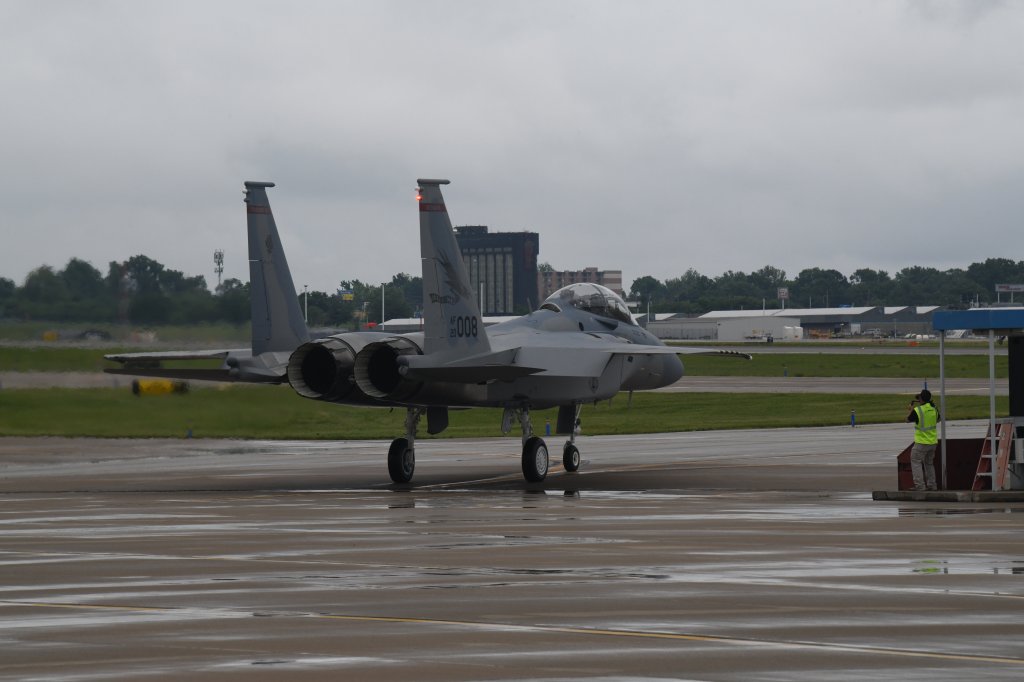
The second part of your question is what are we going to do with the back seat? And I think that’s the brilliance of having an open digital architecture capability. I think who or what expertise we put back there is dependent upon the mission and the threat of what we’re fighting with. It’s possible that we, like you mentioned, maybe we just put another pilot back there. I’m not sure what the pilot would do back there. But maybe he or she would do something worthwhile. Maybe we put a WSO back there and essentially, it’d be sort of Strike Eagle-like and employ the jet that way. I’ve heard rumors that maybe we throw a computer specialist back there to do computer things, which I don’t even know and I’m not going to speculate [on] because I really don’t know. I think there’s lots of options that this airplane is going to bring that we probably haven’t even considered at this point.
TWZ: And then carrying outsize weapons, potentially hypersonics, stuff like that. You could put a specialist potentially in the back to operate that special mission equipment. Is that kind of what you’re thinking that you could potentially do?
MK: I don’t even know. Who knows what Raytheon and Boeing and all those guys, Lockheed, who knows what they’re working on that we could put on this airplane. But I will say that’s one of the major advantages of the F-15 airframe versus a stealth airframe. We recognize we’re not stealthy. We honestly don’t care. And we think it works out for us. We don’t mind that everybody can see us out there. But because of that, we can be nice and big, carry huge weapons that internal-carry stealth airplanes can’t carry. As the threat is getting out there and shooting longer and farther away. At some point, our missiles are going to have to grow and shoot longer and further away too and the Eagle will be well-stationed for that.
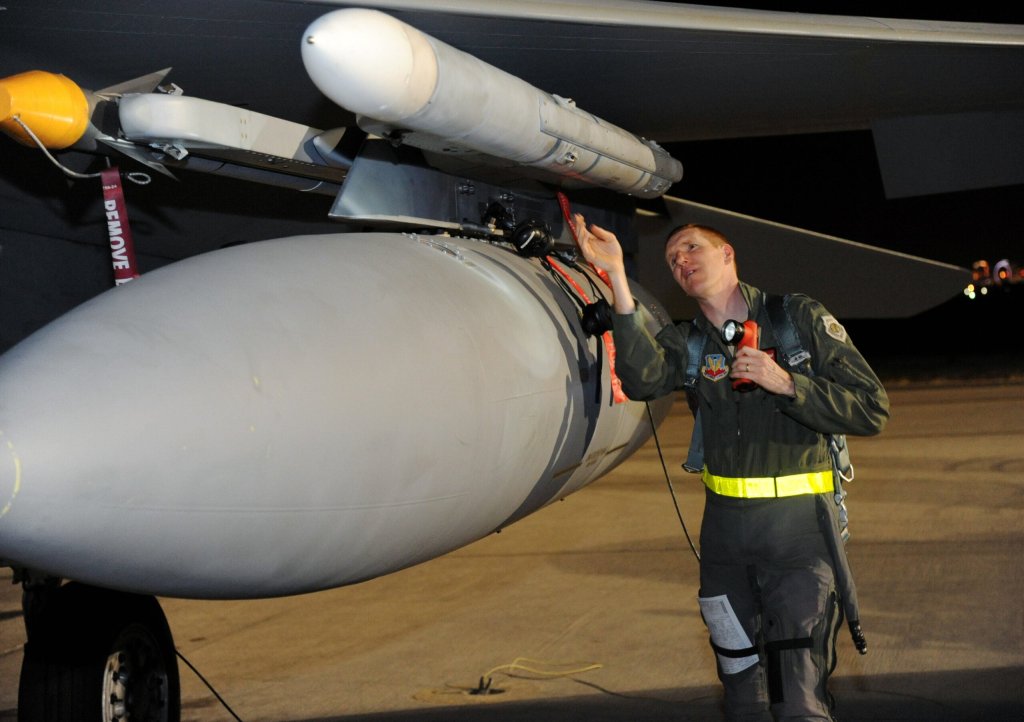
TWZ: Getting back to a mission that’s more ‘in the now.’ The most critical thing you guys probably do day-to-day is the homeland air sovereignty mission. And the 142nd FW covers basically up into Canada all the way down to Northern California, if I’m correct. Is that right?
MK: That’s true. I will say Canada does rotate forces in so they’ll fill out on the West Coast as well, but they’re not there all the time.
TWZ: So what does the EX bring to this mission compared to the Cs that you have today?
MK: It’s going to be pretty similar. It has more power and more efficient engines. So we’ll have longer loiter time. That’ll be good. I would assume we have better radios. But I’m not sure about that, now that you mentioned it. I would assume it has better radio communication capabilities. But I’m not entirely sure about that. It definitely has a better radar. So that’ll help us with detection of threats that are out there. There’s the capability to carry some extra missiles if we need it.

I think it’s going to be a similar capability with a slight upgrade. Generally speaking, when we’re talking about the homeland defense mission, we’re not usually talking about having a need for EPAWSS and those types of systems. But I suppose it’s possible because we spend about half of our time doing alert training thinking about the asymmetric threat like a post-9/11 type of threat or assessment.
TWZ: Drones, cruise missiles, stuff like that?
MK: About half of it is on the airline threats, Cessnas, those kind of guys. And then the other half of it is kind of on a Russian long-range aviation type of threat, which would include cruise missiles and those types of things. I would think that the X is probably a little bit more capable than the C model in detecting cruise missiles, but I’m honestly not sure. So I think it’ll be a similar capability, honestly, overall for alert with the exception of something that should be a big advantage. It’s newer, it’s more reliable, and parts should be more available. That said, my maintenance group commander is constantly yelling at me that 60% of the jet is a Strike Eagle as far as the parts and so we’re kind of now going to be duking it out over parts availability amongst the Strike Eagle guys. I think it’ll work out just fine. It’s just another factor. We don’t know what that looks like, but it’s a factor.
TWZ: And the newer airplanes have better availability so you probably need less to do the same mission?
MK: Yeah, you would hope. But again, my maintenance crew commander keeps telling me, it’s an airplane. Airplanes break. They’re not supposed to, but sure.
TWZ: Originally, the Air National Guard had conformals in some of the units back in the day, in the ‘80s, for the F 15A-D models. So this is kind of being added back in a way. What do the conformal tanks bring you guys beyond the air-to-ground capability? Probably more range, right? When and why would you want those on the jet?
MK: I think once we get conformals, we’ll just keep them on always. Because a conformal fuel tank is 4,000 pounds of gas, which is the same as an external fuel tank. So that right there, to your point, is more range, more loiter time right there every single day. And so we would just put them on there and keep them on.
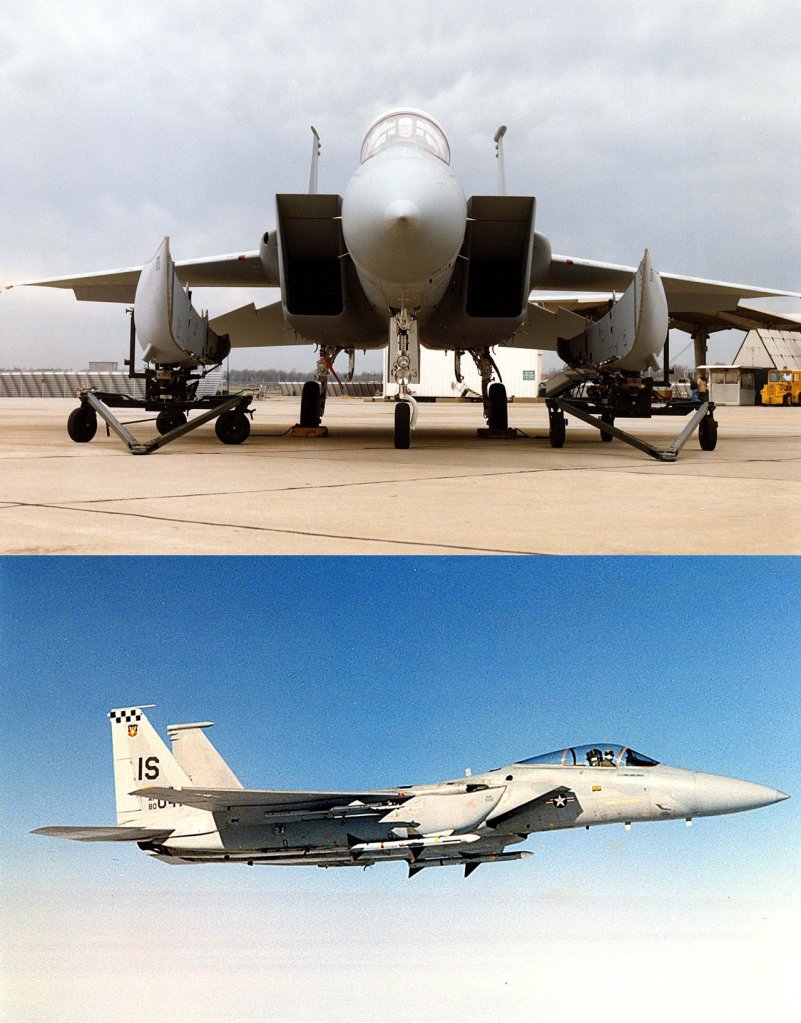
The big thing that it gives us is the air-to-ground capability. We would then have hardpoints where we could put bombs… There are old conformal fuel tanks sort of out there, whether in the boneyard or maybe they’re within the SPO. But as you can imagine — like you mentioned — those were A models, B models. Those were basically analog-style conformal fuel tanks. This is a digital airplane. And so what ends up happening is I think you could physically attach the conformals onto the new airplane, but the old conformals, they’re going to have these really wide margins for error as far as how much fuel is in them, or how they hook up or whatever. Whereas the digital airplane has very tight margins for error. And they don’t really hook up all that well. And they don’t necessarily work all that well. So the test organizations are working on that right now. What does that look like? And how can they make the old conformals work with the new jet? Or do we just need to buy all new [ones]? And then there’s also the old conformals, there’s something about where half of the hardpoints are smart. And so they can be programmed, or they can be retrofitted or fitted for different types of weapons. Whereas half of the hardpoints are dumb, and they can’t be and they don’t have as much flexibility. That’s an ongoing conversation in the SPO and the test community as to what’s the best way forward to get the conformals to the F-15X.
TWZ: Redhawks love to dogfight, right?
MK: Absolutely.
TWZ: You guys are Eagle pilots, it’s in your blood. It’s kind of the backbone of your mission, or at least maybe the most entertaining part of it. Can you compare the EX and a C and what you think it’s going to bring to that within-visual-range fight?
MK: It should also be pretty similar. The jet does fly differently from what I’m told. That is what the guys say. It’s a fly-by-wire system compared to the old C model ‘levers and pulleys’ type of system. In the current C model, the pilot has to use some finesse to make sure you don’t over-G and then in the slow-speed fight, you can basically just manhandle the jet and tell it what you want it to do, and then it will just do it. Whereas with this new airplane, from what they tell me, it’s faster. The engines have way more thrust and so in the high-speed fight, it’s pretty darn impressive. The airplane won’t let you over-G it. You can over-G it, but the airplane won’t let you over-G it. And so as long as you’re going fast, and you’re just kind of doing things, quote unquote, ‘normal,’ I think you’re gonna be able to pull a lot more energy for a lot longer, sustained amount of time and have a really nice rate fight capability, and sort of a two-circle, high-speed type of fight. But in the slow-speed fight, the airplane also won’t let you do kind of all the things that we can do now.
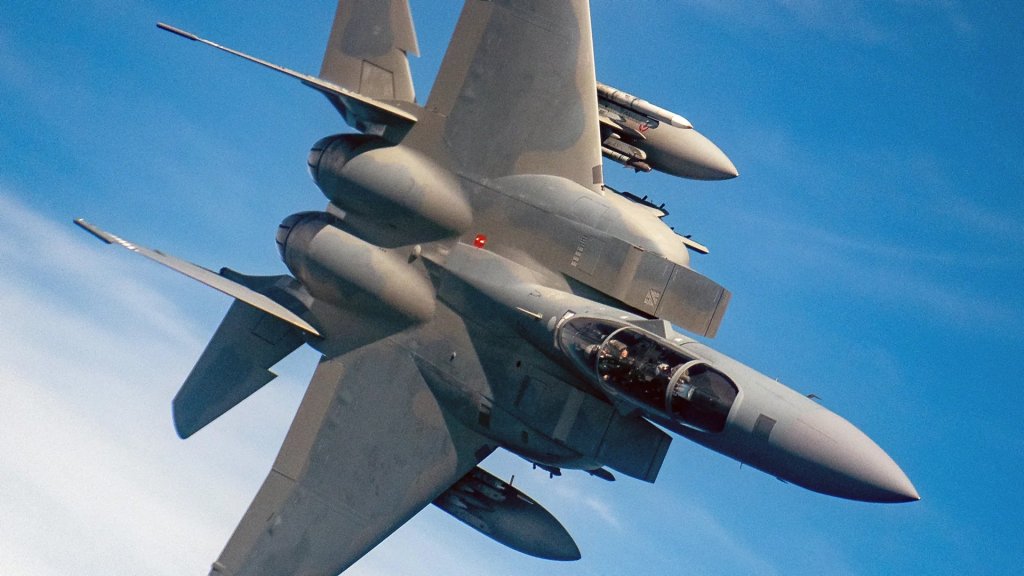
Today in the C model, if I’m slow, I can just put in full rudder and split the throttles and cross-control and do all these kinds of things. You’re not really trying to depart the airplane, but you’re trying to get it as close as you can without getting unsafe. I don’t think the X will even let you do that, I think that the computer will say, ‘you know, hey, that’s not a great idea. Let’s not do that.’ I’m told it’s a little bit less capable in this slow-speed fight. But the reality is both airplanes have the helmet [JHMCS], both airplanes have the 9X [AIM-9X Sidewinder short-range air-to-air missile]. So you have the ability to employ weapons in a within-visual-range environment pretty darn easily in both situations with both airplanes.
TWZ: Fascinating. It’s going to be really interesting to see that.
MK: Now, the new jet also has digital JHMCS, which again, I’m told is better balanced and doesn’t hurt your neck quite as much. And so that could be actually quite nice. So we’ll see how that one goes too.
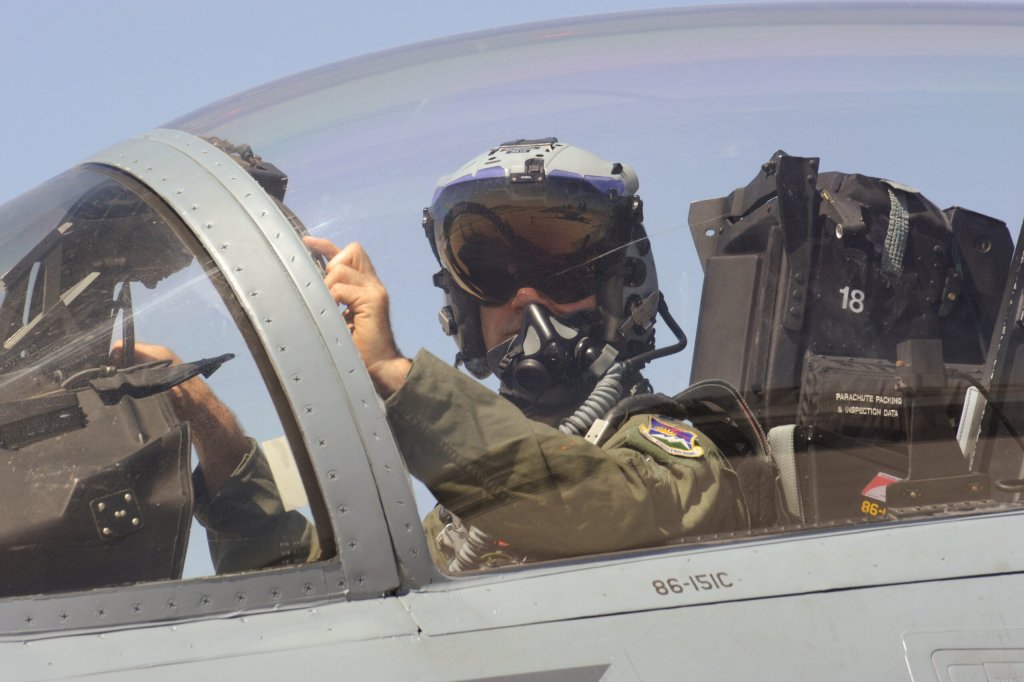
TWZ: Let’s talk about the future, you can call it hypothetical — Collaborative Combat Aircraft (CCAs). There’s a huge push in the Air Force right now, a lot of funds being put into this, to gain a lot of combat mass via unmanned collaborative combat aircraft — i.e. drones — that can accompany our fighters and help them in their tasks. F-15EX has long-range, can carry a lot of stuff, but also has room for somebody in the back. There are a lot of flashing lights that say this thing would be really great as a CCA drone controller. Any ideas on that? Any talk about that that you’ve heard and that you can share? And do you see that type of relationship being something where those aircraft are based remotely or part of the wing somehow? Any thoughts on how the F-15EX and the 142nd Fighter Wing might plug into it?
MK: I’d say that when it comes to CCAs, nobody knows. So that’s really the most honest answer. Nobody knows what it looks like, where it might be, how many, how it’s controlled. I just got a brief a month or so ago and I left the brief going, ‘and nobody knows.’ And I think that’s really, truly the most honest answer I can give you. So it’s developing every single day. And who knows? I mentioned the X and its growth potential to do missions that we’ve never even thought about, and the fact that we could have some flexibility with whom we put in the back. I think that maybe if it is another pilot that has to sort of fly those things, if that’s even how it gets developed, then I think it’s a possibility. But then again, who knows how the CCA is going to develop through its test and everything else. So I would say that’s an open question, but it’s definitely possible.
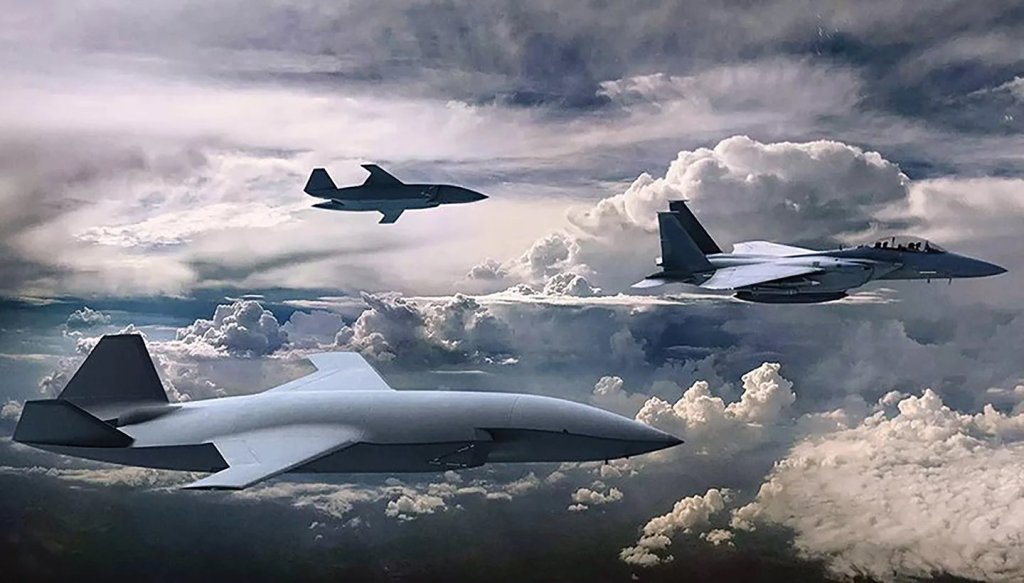
TWZ: Last question for you. So I would imagine that a lot of the stuff that you guys have, especially the newer stuff for the C, can port over to the EX. Do you have the Legion Pod yet?
MK: We do have some IRSTs now. Yes.
TWZ: So that’s the big capability upgrade, a whole new sensor system that you guys can use. Will the Sniper Pod and the IRST and some of the other things that you guys have all pulled over to the EX and be used by that aircraft too?
MK: No one’s told me one way or the other. I would assume so. I can’t imagine that it wouldn’t. I’d be surprised if it doesn’t, I guess I’d put it that way. But I haven’t been told that for sure. Because honestly, we just got the IRST within the last few months and the guys are trying to get used to using it… The first time I got to try to use it was when we were doing some red air [adversary support], for some [Weapons Instructor Course] support at Nellis and it was cool. It was a good upgrade.
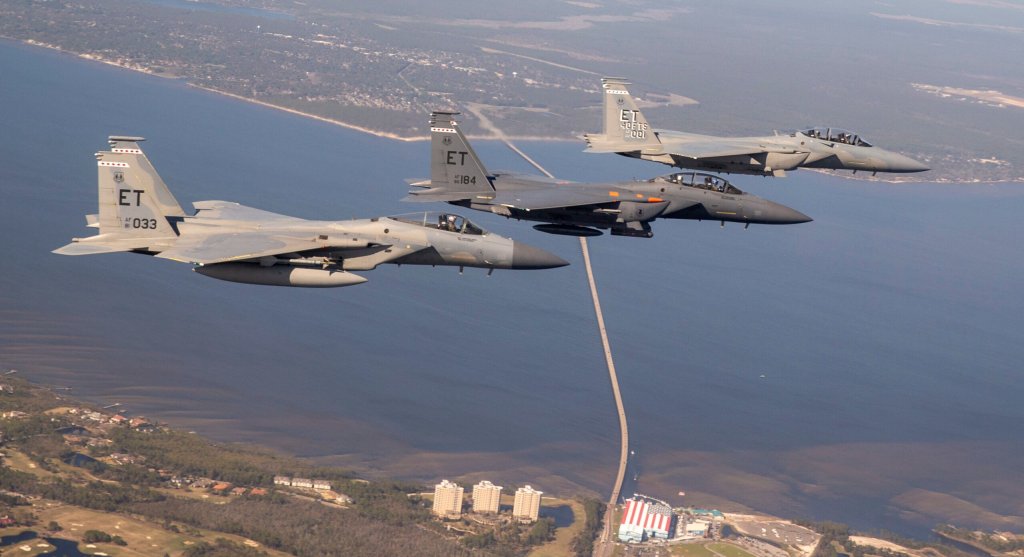
TWZ: Well, that’s all I’ve got for you. I think we covered a lot of ground. Anything else you’d like to add? Any other color you want to put on the canvas for readers about EX and what the 142nd is doing?
MK: I think the big thing that we just want to communicate is that we feel at the 142nd is very lucky and very blessed and very excited to lead the way with America’s newest fighter. And we’re here to help develop the [concept of operations] and the training and help Kadena get on its feet. And I think that the Northwest should feel proud that we get to represent the latest and the greatest that the Air Force has to offer.
Author’s note: A big thanks for the public affairs shop at the 142nd FW for making this interview happen and to Colonel Kosderka for providing his thoughts on the F-15EX and the historic moment for the 142nd Fighter Wing and the USAF.
Howard Altman contributed to this report.
Contact the author: tyler@twz.com
